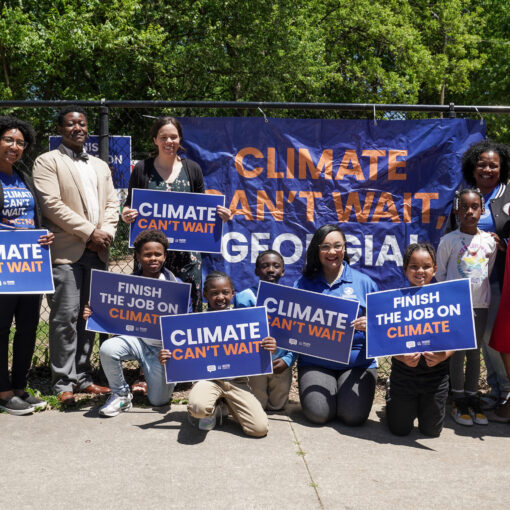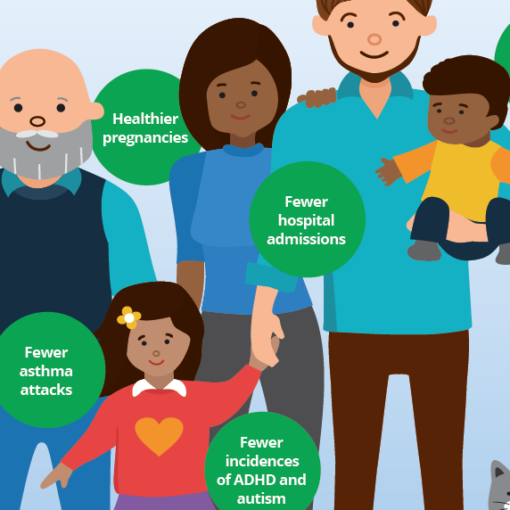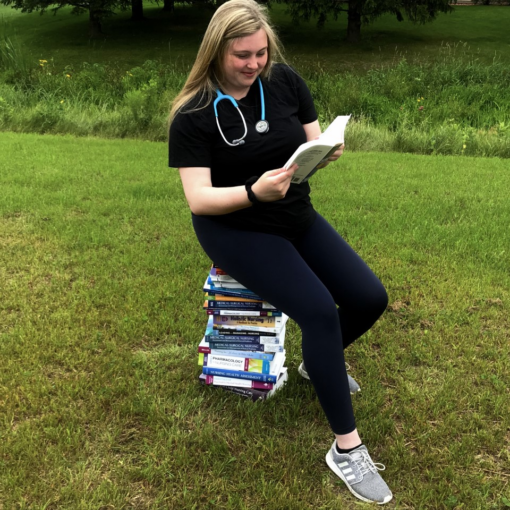FOR IMMEDIATE RELEASE
Contact:
Milagros Elia
Program Manager, Climate & Clean Energy Advocacy
Alliance of Nurses for Healthy Environments
914.455.1165
milagros@enviRN.org
Twenty-six nursing organizations plan for health impacts of extreme heat with White House Council on Environmental Quality, EPA, and HHS
Washington, D.C.– On Monday September 9th, the White House Council on Environmental Quality (CEQ) will host representatives from 26 leading national nurses organizations to discuss the critical importance of addressing extreme heat and plan for future actions. Organized and led by the Alliance of Nurses for Healthy Environments, this event aims to discuss strategies that the 5 million nurses in the United States can implement to enhance the Biden Administration’s historic actions to address the climate crisis and help communities across the United States become more resilient to climate impacts such as extreme heat.
“Nurses hold a trusted and unique position in communities nationwide. In order to promote a healthcare workforce prepared to care for those affected by extreme heat, nurses must be included in the strategies and policies aimed at reducing climate-related health threats”, said Katie Huffling, DNP, RN, CNM, FAAN, Executive Director of the Alliance of Nurses for Healthy Environments. “When nurses have the tools and resources to provide clear and accessible information, we can promote protections for patients and communities, especially for those at most significant risk.”
Summer 2024 commenced with over 265 million people in the United States experiencing a record-breaking heat wave. Heat-related deaths have increased with warmer temperatures associated with increased risks of hospitalization for heart disease, respiratory complications, kidney damage, preterm birth, and mental health impacts. Nurses are on the frontlines treating patients with exposure to extreme heat with elevated health risks for outdoors workers, children and older adults, and those who experience barriers to accessing cooling or healthcare such as those living in low-resourced communities.
“The Biden Administration has made historic investments and commitments at a national level which will have tremendous impacts in bolstering community resilience to extreme heat”, says Milagros Elia, M.A, APRN, ANP-BC, Program Manager, Climate and Clean Energy at the Alliance of Nurses for Healthy Environments. “The Inflation Reduction Act (IRA), provides notable opportunities for communities to address extreme heat, including tax credits/rebates for weatherization improvements, financing for heat monitoring, and grants to increase equitable access to trees and green spaces in urban and community forests. Nurses are also well-positioned to facilitate education to patients and communities on how to access these much needed resources.”
“The NLN firmly believes that without a healthy planet, we cannot have healthy people. Nurses are dedicated to the health and well-being of all. The issue of extreme heat is a social-determinant of health. Nurses must intervene, lead and make a difference in managing, reducing and eliminating the causes as well as the effects of extreme heat”. – Dr. Beverly Malone, President and CEO, National League for Nursing
“The NBNA, under the presidency of Dr. Sheldon Fields, serves as a national nursing body to influence legislation and policies that support comprehensive efforts to reduce the impact of climate change. Climate change has a devastating impact on all populations, but most specifically, people living in historically marginalized communities. It is incumbent on all nurses to advocate for health equity and environmental justice, and to take immediate measures to eliminate the causes and effects of extreme heat. Collectively, we can save our planet.” – Dr. Viviene Pierce McDaniel, Vice-Chair, National Black Nurses Association Health Policy Committee
“The NSNA, as a representative body of our nation’s nursing students, recognizes the threat climate change and extreme heat poses to our population of future nurses and our future patients. As such, we encourage our students and profession to advocate for standardized education on the person-centered impact of climate change, as climate change influences holistic human health and wellness, and is not strictly an environmental issue.” – Ethan Slocum, President, National Student Nurses’ Association (NSNA)
“Midwifery practice can help mitigate the risks associated with extreme heat and support better outcomes for both mothers and babies by educating moms on health-related impacts like dehydration, heat exhaustion, and preterm labor. Additionally, midwives can educate parents to monitor their newborns for heat-related illnesses since babies are not able to regulate their body temperature as easily.” – Michelle L. Munroe, DNP, CNM, FACNM, FAAN Chief Executive Officer, American College of Nurse-Midwives (ACNM)
“Access to clean, cool air is not a luxury—it is a fundamental health necessity. In many schools, particularly those without air conditioning, poor air quality can exacerbate existing health conditions and put our most vulnerable students at greater risk. School nurses play a critical role in advocating for equitable environmental conditions that ensure all students can breathe easily and learn safely.” — Terri Hinkley, EdD, MBA, BScN, RN, CAE, CEO, National Association of School Nurses (NASN)
“Board-certified women’s health nurse practitioners (WHNP-BCs) are on the frontlines of prevention, providing essential guidance on recognizing early signs of heat-related illnesses, As the only nurse practitioners whose scope of practice includes high risk obstetric care, WHNP-BCs are uniquely positioned to recognize and treat heat-related impacts on women’s and birthing person’s health and to educate patients on the risks of heat-related conditions, such as dehydration, heat exhaustion, and preterm labor, ensuring that both mothers and babies are better protected.“
– Heather L. Maurer, MA, CAE, Chief Executive Officer, The National Association of Nurse Practitioners in Women’s Health (NPWH)
“The health impacts of climate change pose a significant challenge to population health. As we’ve witnessed with the COVID-19 pandemic, a lack of investment in public health infrastructure can severely limit our country’s ability to respond to public health threats. Robust funding for climate change initiatives as well as education and practice support to grow, educate, and prepare the public health nursing workforce to address these conditions are vital to ensuring that states and local communities have the resources necessary to protect human health in the face of extreme weather events. – Dr. Krista Jones DNP, MSN, RN, PHNA-BC, FAAN, Chair, Council of Public Health Nursing Organizations.
“The Association of Women’s Health, Obstetric & Neonatal Nurses (AWHONN) is committed to advancing the health and well-being of women and neonates by addressing environmental factors that impact maternal and newborn health and outcomes. Recognizing the critical intersections between environmental health and reproductive health, we aim to support and advocate evidence-based practices and policies that safeguard the environment and, consequently, the health of women and their newborns. By addressing environmental risks and advocating for cleaner, safer communities, we strive to ensure that every woman and neonate can thrive in a healthy, nurturing environment. Together with our collaborative partners, we can make a meaningful difference in the lives of the most vulnerable among us.” –Cheryl Bellamy, DNP, APRN, CNM, CNS-C, C-EFM, President, Association of Women’s Health, Obstetric & Neonatal Nurses (AWHONN).
“Climate change is a public health emergency. This presents a unique challenge to our health, equity, and prosperity, while also offering us the rare opportunity to build healthier, more secure, and more sustainable lives for everyone.” – Julie A Kruse PhD, RN- Chairperson for the American Public Health Association Public Health Nursing Section
“Because children are at higher risk for detrimental health and developmental effects related to extreme heat, it’s imperative that advanced practice nurses who care for children are involved in creating solutions to climate-related effects on children’s health,” said National Association of Pediatric Nurse Practitioners (NAPNAP) President Dr. Daniel Crawford. “Moreover, as advocates and clinicians, we must be empowered to play a pivotal role in the early identification and management of these climate-related health risks, particularly among our nation’s most vulnerable populations.”
“Climate justice is a critical issue for our communities, and nurses must be at the forefront of the conversation on how to protect populations made vulnerable from the health dangers posed by extreme heat. Nurses, particularly those from underrepresented backgrounds, are uniquely positioned to advocate for policy change and implement strategies that mitigate the health risks associated with climate change. DNPs of Color is leveraging its national network of doctoral-prepared nurses to push for climate justice policies that address the systemic inequities exacerbated by extreme heat.” – Danielle McCamey, DNP, ACNP-BC, FCCP, FADLN, Founder, CEO/President, DNPs of Color (DOCs)
“As Hispanics/Latinos, we are at the forefront of the climate change battle for our planet, which fuels our dedication to taking a stand. By implementing innovative climate actions and empowering our nurse advocates, we not only advance health equity but also safeguard our communities and our planet, ensuring a brighter future for all.” – Tiffany Covarrubias-Lyttle, BSN, RN, PCCN, NE-BC on behalf of the National Association of Hispanic Nurses’ Policy & Advocacy Committee
“As a past president of American Society of PeriAnesthesia Nurses I am concerned about the health of our planet, our perianesthesia nurses and the patients we prepare and awaken from surgery. Anesthetic gases are exhaled out of patients’ lungs 95% unmetabolized. These waste anesthetic gases (WAGs) captured in the operating rooms are exhausted off the roof of the hospitals virtually unchanged into our atmosphere. Some remain in the atmosphere for up to 114 years as potent greenhouse gases and ozone depleters. Additionally, every day perianesthesia nurses are exposed to these WAGs while caring for immediate post-surgical patients. This occupational hazard contributes to the development of liver and kidney diseases, certain cancers, miscarriages, congenital anomalies and more. There are technologies that can reclaim or destroy these WAGs and if implemented can reduce healthcare’s carbon emissions, improve nurse’s and our patients’ and the planet’s health. I urge the implementation of these technologies to improve our climate, our nurses’ health and our patients-there is no planet B.” – Elizabeth Card, DNP, APRN, FNP-BC, CPAN, CCRP, FASPAN, FAAN, Director Nursing Research, Nursing Excellence, HCA Healthcare
“As climate change worsens, extreme heat will disproportionately affect the health of older adults. By 2034 – just 10 years from now – the United States will have more people over the age of 65 than under 18. To protect our aging population, nurses must advocate for age-friendly policies and lead in providing accessible and timely messaging, education, and support. Extreme heat isn’t just uncomfortable—it’s deadly. The time to act is now! Nurses @GAPNA_HQ and @enviRN are ready.” – On behalf of the Gerontological Advanced Practice Nurses Association (GAPNA), Valerie K.Sabol, PhD, MBA, ACNP-BC, GNP-BC,ANEF, FAANP, FAAN, Duke University School of Nursing, Director of Planetary Health
Representatives from the nursing organizations will additionally meet with senior leaders at the US Environmental Protection Agency (EPA) and the Office of Climate Change, and Health Equity (OCCHE).
Nursing organizations represented at the Nursing Roundtable with the White House CEQ are:
AFT: Education Healthcare Public Services
Alliance of Nurses for Healthy Environments (ANHE)
American College of Nurse Midwives (ACNM)
American Nurses Association (ANA)
American Organization for Nursing Leadership (AONL)
American Public Health Association (APHA) – Public Health Nursing Section
American Society of PeriAnesthesia Nurses (ASPAN)
Association of periOperative Registered Nurses (AORN)
Association of Women’s Health, Obstetric and Neonatal Nurses (AWHONN)
Council of Public Health Nursing Organizations (CPHNO)
Delaware Nurses Association (DNA)
DNPs of Color (DOCs)
Gerontological Advanced Practice Nurses Association (GAPNA)
Minnesota Organization of Registered Nurses (MNORN)
National Alaska Native American Indian Nurses Association (NANAINA)
National Association of Hispanic Nurses (NAHN)
National Association of Neonatal Nurses (NANN)
National Association of Nurse Practitioners in Women’s Health (NPWH)
National Association of Pediatric Nurse Practitioners (NAPNAP)
National Association of School Nurses (NASN)
National Black Nurses Association (NBNA)
National League for Nursing (NLN)
National Student Nurses Association (NSNA)
Orthodox Jewish Nurses Association (OJNA)
Philippine Nurses Association of America, Inc. (PNAA)
SEIU 1991
###
The Alliance of Nurses for Healthy Environments is the only national nursing organization focused solely on the intersection of health and the environment. The mission of the Alliance is to promote healthy people and healthy environments by educating and leading the nursing profession, advancing research, incorporating evidence-based practice, and influencing policy.




